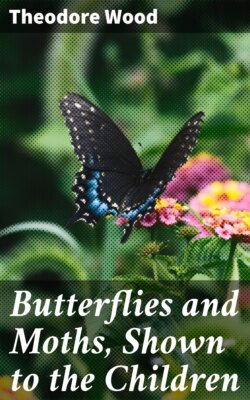Читать книгу Butterflies and Moths, Shown to the Children - Theodore Wood - Страница 8
На сайте Литреса книга снята с продажи.
ОглавлениеPLATE IV
1. Painted Lady
2. Marbled White
PLATE IV
THE PAINTED LADY (1)
Table of Contents
In days of old this was not at all a common insect. But in the year 1877 a vast swarm of Painted Ladies came flying across the Straits of Dover, and spread to almost all parts of England. And since then this pretty butterfly has been a good deal more plentiful. But it is much commoner in some years than it is in others. If you want to find it, the very best place to look is a field of red clover in full blossom. The next best place is a field of lucerne. And the next best place to that is a good steep railway bank covered with flowers. But you may often see it resting on thistles and teasels with peacocks and small tortoise-shells.
The caterpillar of this pretty butterfly feeds upon thistle leaves; and for the first fortnight of its life it lives in a sort of little chamber, which it makes by fastening the tips of several leaves together by means of silken threads. It is covered all over with thorny bristles and is brown in colour, with yellow stripes down the back and sides. If you want to find it, you should look for it in June. And when it is fully fed it turns into a brown and grey chrysalis, marked with a number of silver spots. The butterfly comes out in August, and lives till the following May.
PLATE IV
THE MARBLED WHITE (2)
Table of Contents
Although its colours are only glossy black and creamy-white, this is one of the prettiest of all our British butterflies. But it is quite possible to live all one’s life in the country without ever seeing it, because it is so very “local.” In one field, perhaps, or on one little patch of ground on a grassy hillside, it may be very common indeed, and you may often see fifteen or twenty of the graceful little insects flying about together. And yet you may hunt for miles and miles in every direction, and not see a single one anywhere else.
If you ever happen to find the caterpillar of this butterfly, you can recognise it at once by its colouring, for it has a pale green body with a yellow stripe running along each side, and a reddish head. And besides this there are two reddish spikes at the end of the body, forming a sort of projecting tail. It feeds on different kinds of grasses in September, and then again, after its long winter sleep, in April and May. Look out for the butterfly in July and the early part of August.
